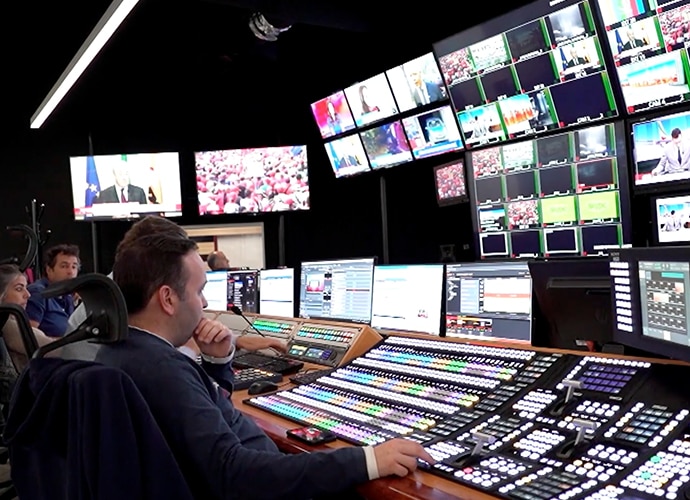Delivering High-Quality Remote Production and Real-time Collaboration
As broadcast infrastructure continues to evolve, real-time collaboration technologies and innovative network solutions will play a crucial role in shaping the future of remote production

Across the broadcast industry ecosystem, delivering stable and high-quality content from remote live events is an increasingly important requirement. Whether covering sports, breaking news stories or a vast array of other requirements, expectations and minimum standards are higher than ever.
However, this brings with it a number of significant challenges, including those caused by limited bandwidth and poor network infrastructure, which can seriously impact the ability of broadcasters to deliver the production quality they need. In addition, environmental, resource and logistical factors can add significantly to production costs or deter broadcasters from covering live events as they would like.
Traditional approaches and technology infrastructure options suffer from a number of disadvantages, such as geostationary satellite latency, synchronization problems and poorly performing networks with low quality of service. The list of potential difficulties goes on, and whether it’s the scalability limitations of dedicated fibre networks, security concerns or last-mile connectivity issues, broadcasters are looking for better ways to address their needs.
Infrastructure Innovation
So, what options are available to address this potentially lengthy list of requirements? Looking at production infrastructure, IP-based solutions using software-defined video networking (SDVN) can deliver the flexible resource allocation required to meet performance and quality requirements. This can be further optimized by employing content-aware routing algorithms and emerging AI-driven network management to optimize the use and performance of infrastructure resources. This is particularly valuable in remote production environments where broadcasters need to have confidence in their ability to bring content to their audiences.
More specifically, the SDVN approach is based on a sophisticated network architecture that leverages advanced encoding, cloud-based orchestration and secure Internet protocols. Video signals are captured by encoders or mobile applications and transmitted over the Internet using streaming protocols such as SRT and RIST, which ensure secure and reliable delivery with minimal latency. These signals are then processed through cloud infrastructure, where they can be recorded, remuxed or transcoded to meet different format requirements before being distributed to customers.
Based on a private IP backbone, this approach not only ensures efficient signal flow but also enhances redundancy and scalability, allowing broadcasters to deliver consistent, high-quality content globally. As such, it offers transformative flexibility and reliability for broadcasters operating in remote environments. By leveraging cloud-based solutions, for example, they can overcome existing geographical and logistical challenges, reducing the need for extensive physical infrastructure. This allows for scalable, secure and high-quality point-to-multipoint content distribution, replacing traditional satellite and private fibre networks with a more flexible and affordable solution.
Digital Collaboration
Broadcasters can also look to Low Earth Orbiting (LEO) satellite technologies to provide low-latency, high-speed connectivity. By providing global coverage and with closer proximity to Earth, they bring the flexibility and redundancy required to minimise the risk of service interruptions.
The professional video industry's #1 source for news, trends and product and tech information. Sign up below.
An increasingly cost-efficient alternative to legacy technologies, LEO satellites also have smaller power requirements allowing for more energy-efficient and portable broadcast equipment. This makes them an attractive option for enhancing remote production capabilities, especially in challenging locations or for rapidly developing events.
For those organizations focused on maximizing their use of real-time collaborative workflows, this approach can deliver the performance they need. In remote locations, having these capabilities in place ensures team members can contribute to, manage and adjust live content creation and distribution irrespective of where they are. Ideally, this should closely mirror the cohesive environment familiar to on-site production professionals while embracing the flexibility of remote setups.
As broadcast infrastructure continues to evolve, real-time collaboration technologies and innovative network solutions will play a crucial role in shaping the future of remote production. Those broadcasters that embrace this kind of innovation will be ideally placed to succeed in an environment where delivering high-quality content from anywhere in the world is more important than ever.
Paul Calleja graduated from the Royal Melbourne Institute of Technology with a diploma of Audiovisual systems in 2003. Upon graduation, he worked in outside broadcast and at Sky Channel Australia as an engineer.
In 2005, Paul relocated to the UK and after briefly working on contracts with Ascent Media and Technicolor Network Services in systems engineering roles. Paul joined the BBC in 2006 working as a senior broadcast systems engineer at BBC Television Center London. In 2008, he joined the EBU, designing and project managing many different technical projects, for both sports and news applications.
In 2019, he took the role as CTO of GlobalM and became CEO in September 2023.

